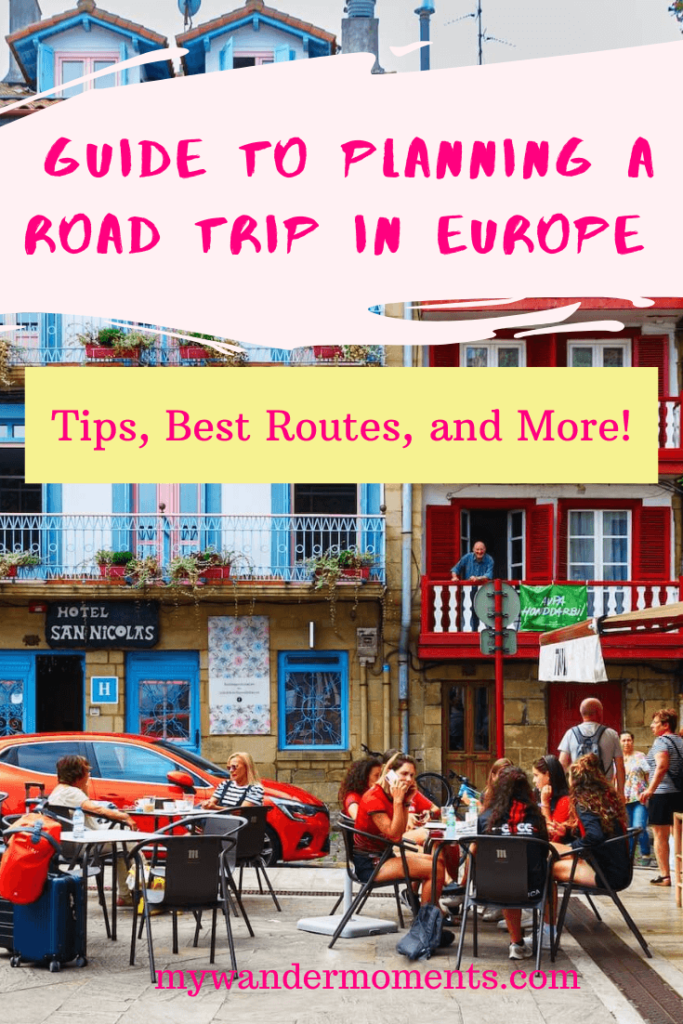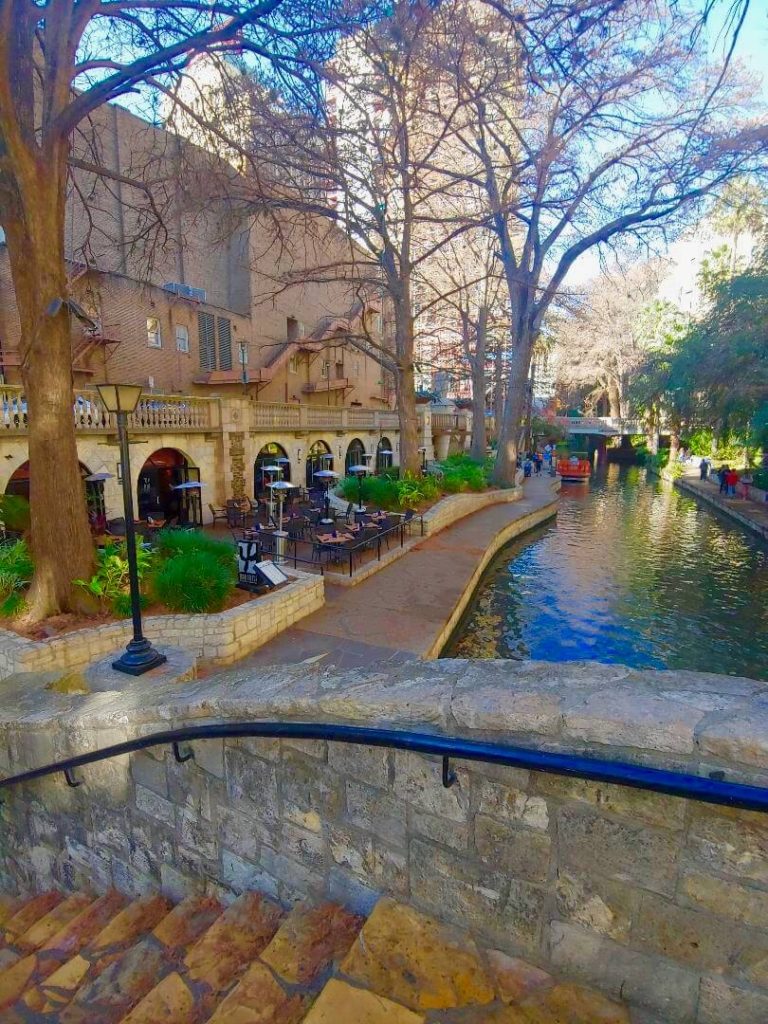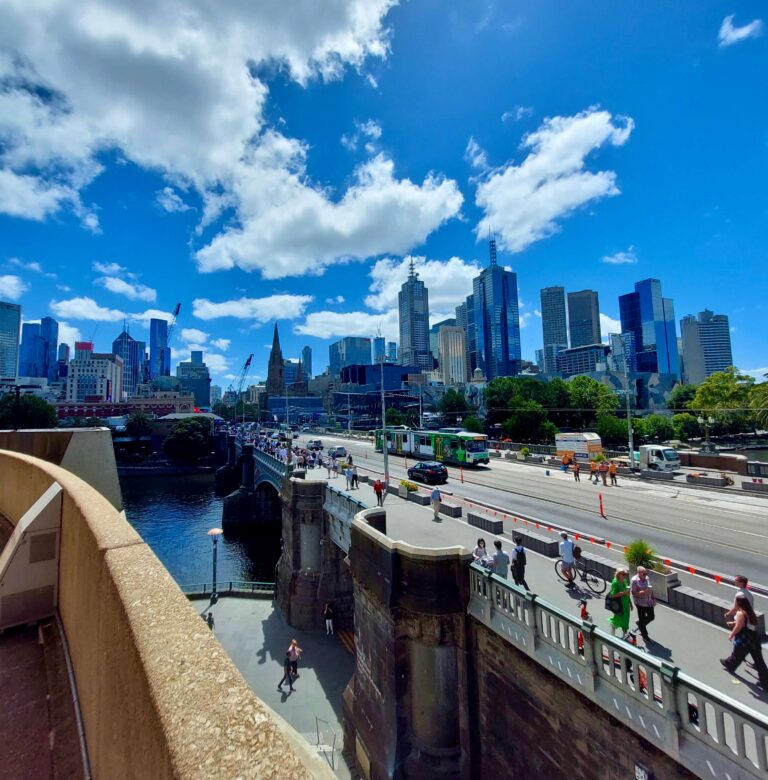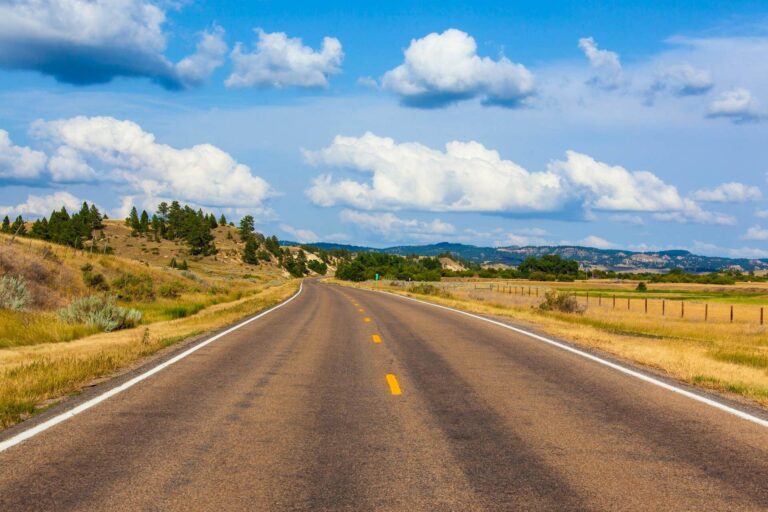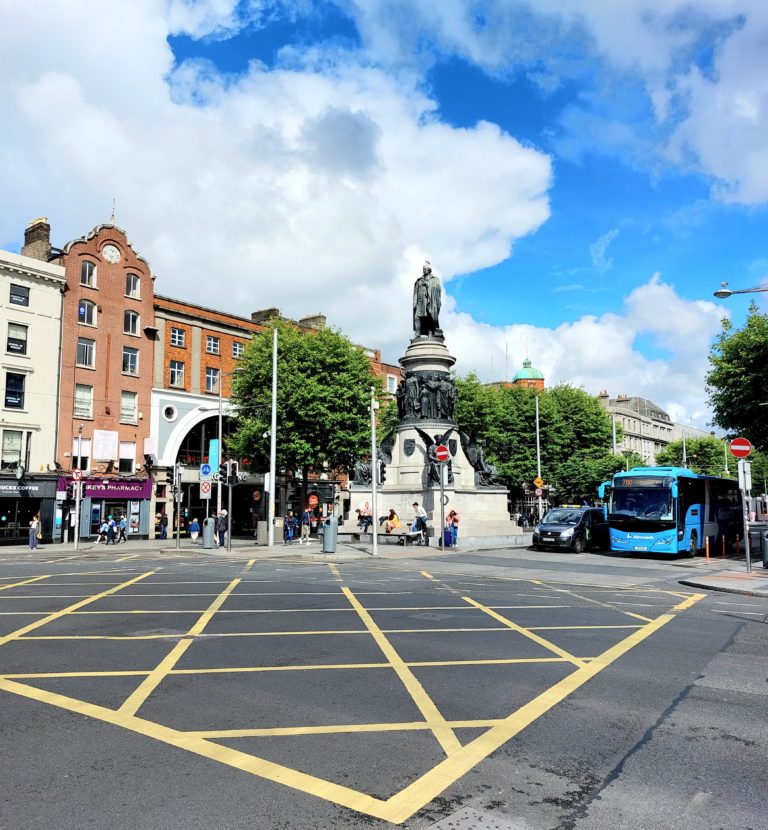Ultimate Guide to Planning a Road Trip in Europe – Tips, Best Routes, and More!
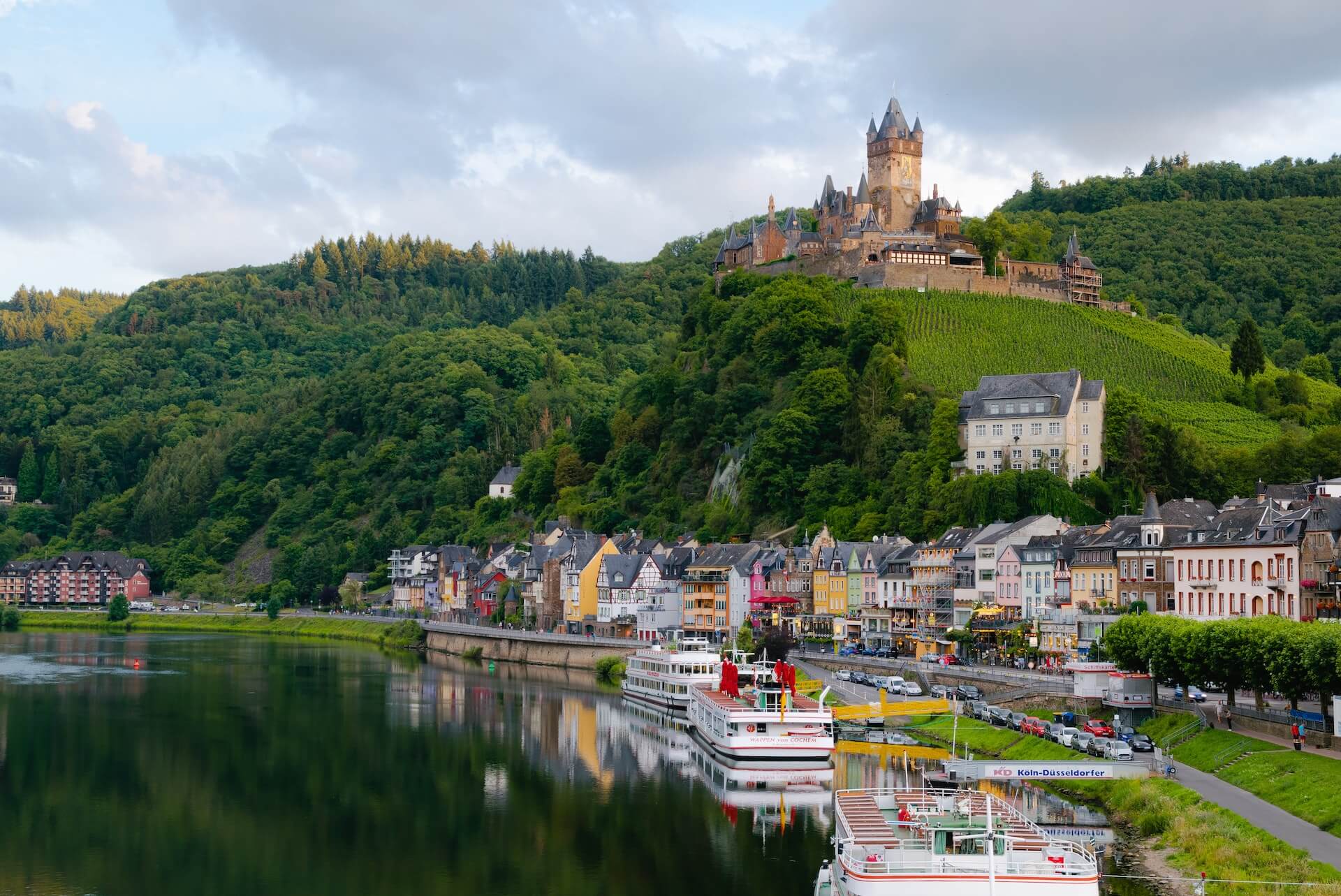
{{This post might contain affiliate links. If you use any of these links to buy a product, I will earn a small commission at no additional cost to you}}. Read my full disclosure for more details.
A Road trip in Europe is a dream come true for many travelers and the Ultimate Guide to Planning a Road Trip in Europe – Tips, Best Routes, and More is all you need to plan it! With its scenic routes, picturesque towns, and fascinating culture, it’s no wonder this is a popular destination. For Americans, there are a few things to remember when planning a European road trip. I will cover what you should know for a successful road trip in Europe and reduce the stress to a minimum.
Please keep in mind that planning a road trip in Europe is not the same as planning a road trip in the USA as in Europe you won’t be just visiting different cities in the same country, but you will be visiting other countries as well, which means you will be crossing borders. That being said that your Europe road trip preparation should be as thorough as possible. Read this Ultimate Guide to Planning a Road Trip in Europe further to learn all the planning details for your upcoming European road trip, the best tips, and more.
Ultimate Guide to Planning a Road Trip in Europe
The Most Important Things to Consider for Your Road Trip in Europe
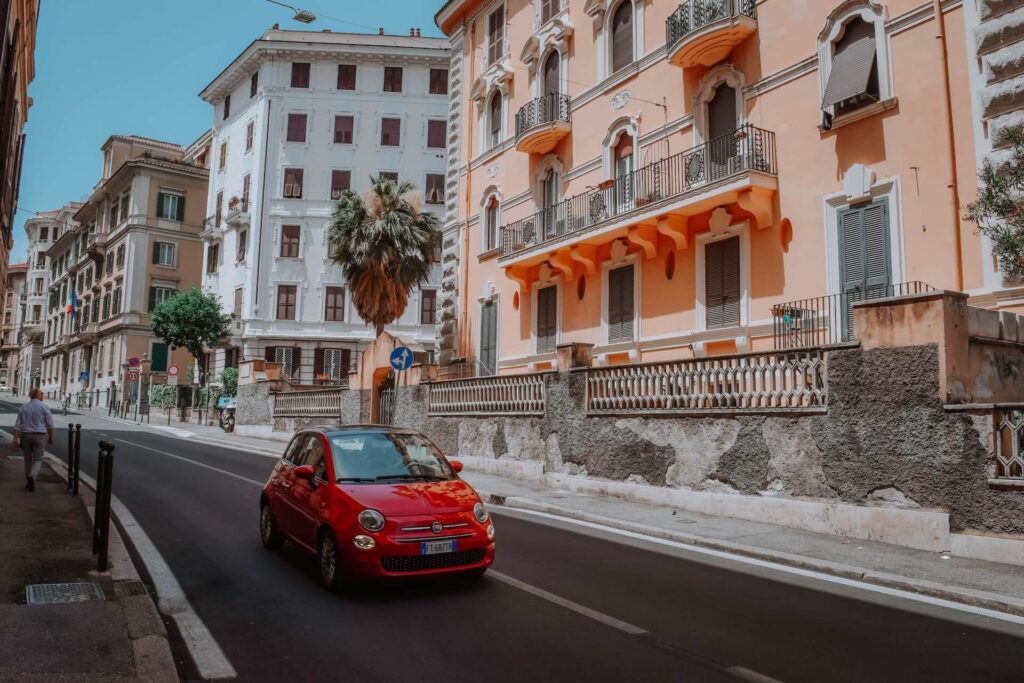
Before getting into Europe to explore its wonders, there are a few essential things to consider. After all, you are going on a different continent, with different regulations and norms. This Ultimate Guide to Planning a Road Trip in Europe covers all you need to know before your European trip.
Can You Drive in Europe with a USA License?
The short answer is yes, you can drive in Europe with a valid US driver’s license for up to 90 days. However, it’s important to note that some countries may require an International Driving Permit (IDP) in addition to your license. After 90 days, the IDP will be mandatory if you want to keep driving in European countries.
The IDP translates your license into multiple languages and is recognized in many countries worldwide. While it’s optional in some European countries for the first 90 days of your trip in Europe, obtaining an IDP to be safe is a good idea. The countries requiring an IDP to rent a car are Croatia, Austria, Italy, Bosnia-Herzegovina, Greece, Hungary, Slovenia, Spain and Slovakia, France, Germany, and Luxembourg.
Note that an IDP is not a substitute for your driver’s license. You’ll need to carry both documents with you when driving in Europe. You can obtain an IDP from the American Automobile Association (AAA) or the American Automobile Touring Alliance (AATA).
What It Takes to Drive in Europe
Driving in Europe is similar to driving in the US, but there are a few key differences to remember. You will need a series of documents, such as your driving license or IDP, vehicle insurance, V5C certificate, and travel insurance.
Furthermore, roads in Europe are generally narrower, and cars are smaller. Additionally, many European cities have strict driving restrictions, such as low-emission zones, so it’s essential to research the rules of the cities you plan to visit.
In general, it’s a good idea to brush up on local driving laws and customs before hitting the road. By doing so, you will reduce the unpleasant surprises as much as possible and worry about fewer aspects.
Car Rental in Europe
Renting a car is a popular option for travelers who want the freedom to explore Europe on their schedule. Most major car rental companies have locations throughout Europe, and you can usually reserve a car online before your trip.
However, be aware that rental prices vary widely depending on the time of year and location. So shopping around for the best deal is essential. Read more about car rental procedures and tips in Europe here.
Driving Tolls in Europe
Driving on toll roads is a common experience during a trip to Europe. It’s important to understand the toll systems in the countries you’ll be driving in. Here’s an overview of tolls in Europe.
Most countries will have a highway toll that varies based on the distance you are going to travel. You can pay it in cash or by credit card.
Countries like Austria, Switzerland, and Romania require a vignette. This is a sticker you affix to your windshield and allows you to use the country’s highways. The vignette is available for durations from 10 days to a year. You can purchase it at gas stations and border crossings.
It’s important to note that some countries, like Italy and France, also have tolls for tunnels and bridges. These fees are usually collected at the entrance or exit of the tunnel/bridge. Some toll systems, like the electronic toll systems in Portugal and France, require you to register beforehand and pay online.
Make sure to research the toll system of the countries you’ll be driving to during your road trip in Europe. Have the necessary cash or credit cards to pay toll fees handy so you go through the checkpoints fast.
What to Pack for a Road Trip in Europe

Packing for a road trip in Europe will depend on the season and the countries you plan to visit. In general, here are the main points you should have on your checklist for your road trip in Europe!
Documents: Before you hit the road, ensure you have all the necessary documents. These documents include your Passport, driver’s license, vehicle registration, and insurance documents. It’s also a good idea to have a copy of your itinerary and hotel reservations. A full list of documents for Americans driving in Europe can be found here.
Navigation: While GPS and navigation apps are great, carrying a physical map for backup is wise in case of technical difficulties. It would be best to consider purchasing a Europe-wide GPS navigation system for smooth navigation across different countries and regions or simply download an Offline Google Maps.
Comfortable Clothing: Pack comfortable clothing suitable for the weather conditions of the places you visit. Include items like comfortable shoes, a light jacket, and clothing for occasions, like a swimsuit or formal wear.
First Aid Kit: Pack a first aid kit that includes essentials like band-aids, antiseptic wipes, painkillers, and any medications you may need. Make sure to include any prescription medications in their original packaging.
Snacks and Water: Road trips can be long and tiring, so having a supply of snacks and water is essential. These will keep you energized and hydrated throughout long driving hours during your time in Europe.
Entertainment: Long car rides can get boring, so pack some entertainment to entertain yourself. This could be an e-book, downloaded music, podcasts, etc.
Cash and Credit Cards: While most places in Europe accept credit cards, having cash on hand for emergencies is always good. You might need cash when you are visiting smaller towns or local markets. It’s also a good idea to let your bank know that you’ll be traveling to avoid unexpected card issues.
Power Bank: Ensure you have a power bank to charge devices, especially if you plan to use them for navigation or entertainment.
Travel Adapters: Pack the necessary travel adapters for the countries you’ll be visiting to ensure you can charge your devices.
Emergency Kit: Better to be safe than sorry, so pack an emergency kit with a flashlight, a blanket, and a reflective vest.
Best Europe Road Trip Routes
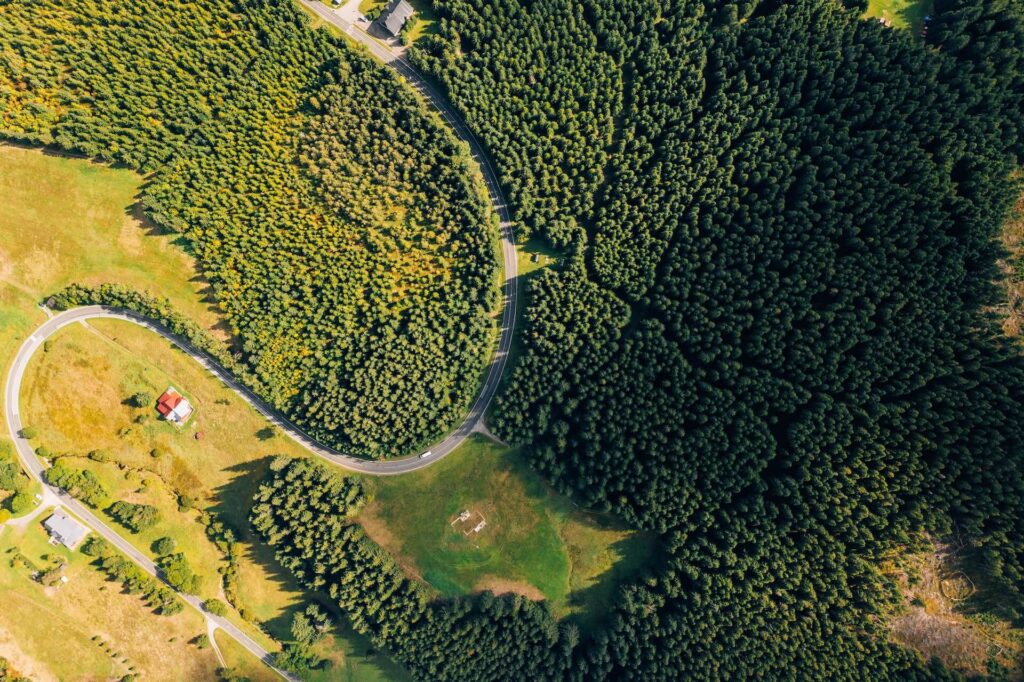
Regarding potential routes for the best road trip in Europe, the sky is the limit. There are 44 countries in Europe that you can explore, each one with its unique culture and beauty.
Europe is home to some of the world’s most beautiful road trip routes. Here are the top three routes for your spontaneous or panned road trip in Europe you can consider. Note that you can easily combine or change the routes according to your interests. However, they are impressive as given, and you will have your life experience!
Road Trip Route #1 From France to Germany
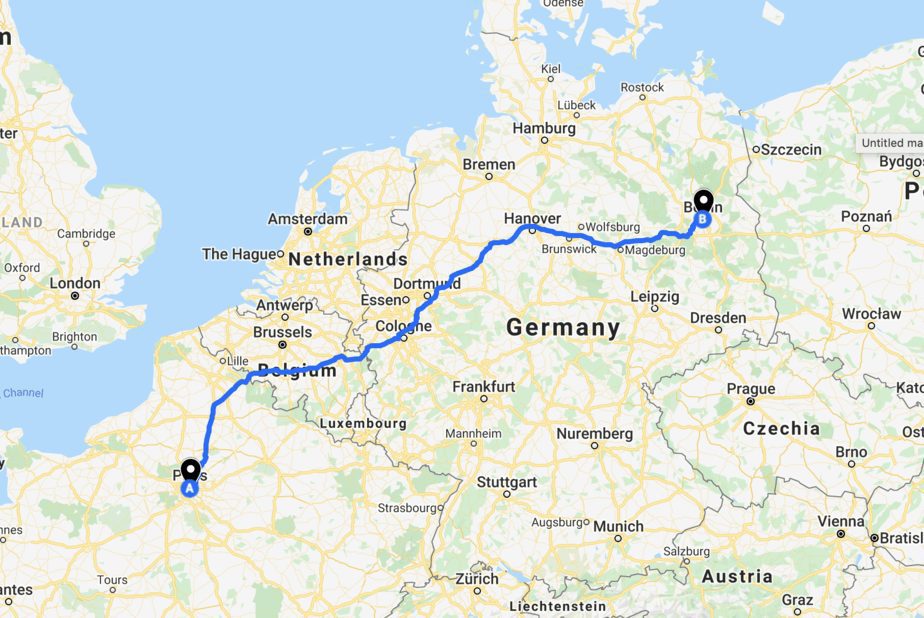
Departing from Paris, consider this Europe road trip itinerary and take the scenic route through the hills of Champagne and Reims to the charming capital of Luxembourg. Here, you can explore the country’s numerous fairy-tale castles. The most famous castles are Vianden, the Beaufort Castles, and the Clervaux Castle.
Trier
A short drive of less than an hour to the northeast will lead you to Trier. This is Germany’s oldest city, where you can admire remarkably preserved ancient Roman baths and basilicas. A great hotel to consider is the Best Western Hotel, located next to the Europahalle Trier Centre. For a more intimate place, choose the Hotel Villa Huegel, which has an inviting pool and a beautiful dining area.
Bacharach
If you make it past Tier without spending the night in town, enjoy an overnight stay in the medieval village of Bacharach. Here, you can stay at Hotel Im Schulhaus, a popular place with nice water views and a local winery. The best dining place in the village is Altkölnischer Hof, a delight in the summer when they have tables outside.
Nurembers and Leipzig
Then, stroll through the picturesque riverside streets of Heidelberg before continuing to Nuremberg and Leipzig. While in Leipzig, immerse yourself in Cold War history and classical music while indulging in a dose of hot caffeine.
If you want to spend a luxury night in Leipzig, the Steigenberger Grandhotel Handelshof Leipzig can offer great accommodation services. This 5-star hotel has a spa, fitness center, and luxurious rooms.
For more budget options, these hostels can be a great choice to spend a night. Groners Leipzig is located in a prime location and equipped with everything you will need for a night. Another budget option for a quick night stay in Leipzig is Five Elements Hostel Leipzig.
Dresden and Berlin
If time allows, make a detour to Dresden, which has been beautifully restored following the destructive bombing of WWII. Wrap up your journey in Berlin, one of Europe’s most innovative cities.
Once you reach Berlin, you will be fascinated by how history blends with modernism. You will find many restaurants, museums, and impressive architecture to admire here. If you are looking for accommodation in Berlin, one of the most appreciated hotels is KPM Hotel & Residences. This hotel is only 2 km from Kurfürstendamm and has a 24-hour front desk.
For a more extended itinerary, commence your trip in London and take the ferry or channel tunnel to France, transforming your road trip into a pilgrimage between Europe’s three artistic hubs.
If you want to save money on accommodation in Dresden or Berlin, consider one of these hostels. If you are a nightlife lover, Hostel Mondpalast in Dresden might be the best choice for you as it is close to all bars and clubs. If you would like to attend some social events while on a short stay in Dresden pick Lollis Homestay. They are located in the center of Dresden and offer daily events.
If instead, you will decide to spend a night in Berlin then I would recommend Circus Hostel that a perfect short stay. They have Quiz nights, Karaoke Thursdays, and Live Music Fridays! Pick the best day. Like to stay in a historic place, so you can experience that local view and learn more about Berlin’s history, then Meininger Berlin Mitte Humboldthaus is a place to stay.
Europe Borders
To cross the borders in France, Luxembourg, and Germany, as a non-EU citizen who is not a resident of these countries, you will need a valid Passport. You will also need a visa if you plan to stay more than 90 days in these countries.
You will have to provide your vehicle registration, insurance documents, and US driver’s license for your vehicle. Additionally, you will need an IDP to drive in Luxembourg, France, and Germany.
Emergency
In France, Luxembourg, and Germany, you can ask for help in case of an emergency by calling 112. This line offers assistance in all types of emergencies, including medical, police, and fire. In all three countries, operators can communicate in English in case of emergency.
Road Trip Route #2 Romania to Austria
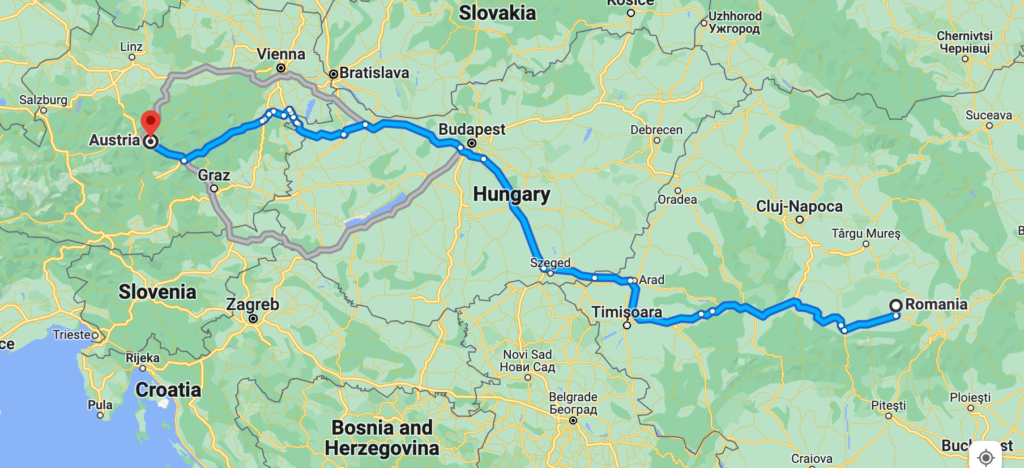
Embark on your journey from Bucharest, heading north through the breathtaking Carpathian mountains towards Transylvania. Be sure to make a mandatory stop at Bran Castle, claimed to be the former dwelling place of the infamous Dracula.
Transfagarasan
From there, take the Transfagarasan mountain road, known as one of the most scenic routes in the world. Make sure to check if the road is open during your trip as it is closed during challenging weather. Along the way, discover the ancient cities and numerous castles of Sibiu, Brasov, and Sighisoara. You will be very tempted to take a night off in Brasov. The town has many hotels and B&Bs, such as Grand Hotel Brasov or Casa Wagner.
Timisoara
Then, head to the uncharted architectural treasures of Timisoara. You will find charming architecture, parks, museums, and the iconic Huniade Castle here. The castle is right in the city’s heart, built in the 14th century. As for accommodation, check out this upscale President Hotel or this budget option Hostel Cornel.
Budapest
Continue your expedition to the peaceful hot springs and trendy ruined pubs of the vibrant city of Budapest. You might want to plan to spend at least a few days in this intriguing city. Belvaros is district 5 of the town, where most restaurants, cafes, and tourist attractions are. Spend a night at Up Hotel Budapest which offers a health club, a fitness center, and a sauna. Or enjoy your stay at Meininger Budapest Great Market Hall.
Bratislava and Vienna
Afterward, set off for Bratislava, the capital city full of surprises. It is only an hour’s drive from there to Vienna’s charming coffeehouses and diverse architecture.
Vienna has a long and fascinating history, having been the capital of the Habsburg Empire for centuries. This has left the city with a wealth of cultural treasures, from stunning baroque architecture to world-class art museums. Vienna is known for its baroque architecture, which can be seen in the grand buildings and churches throughout the city. The historic center of Vienna is a UNESCO World Heritage site and is filled with beautiful landmarks.
Take a break from the road and stay a night at VIP Apartments in Bratislava or in the Best EU Art Boutique Capsule Hostel Chors.
Europe Borders
Romania, Hungary, and Austria require American citizens, not residents of one of these countries, to carry a valid Passport when crossing the borders. There’s a visa requirement for travelers that stay more than 90 days in one country.
As a driver, you must have your vehicle registration, insurance, and IDP attached to your US driver’s license.
Emergency
In case of an emergency in Romania, Hungary, and Austria, you can dial 112 to seek assistance. This emergency line provides aid for various emergencies, such as medical, police, and fire. The operators are proficient in English and can communicate with you in case of an emergency.
Road Trip Route #3 Portugal Road Trip
Begin your road trip in Braga and then drive towards the south to the medieval town of Guimarães, recognized as a UNESCO World Heritage site. Next, continue your journey to Porto.
Porto
Porto is the breathtaking “second city” of Portugal that is nothing less than first-rate.
It is a beautiful city with a rich cultural heritage and attractions that draw tourists from all over the world. The city is also known for its famous port wine, which can be enjoyed at one of the many wine cellars along the Douro River. Additionally, there are many picturesque streets to explore, and natural beauty such as the Douro Valley and the Atlantic coast.
Figueira da Foz
Drive towards the east to explore the vineyards and steep valleys of Penafiel and Amarante. Then, head towards the coastal road leading to the vast white beaches of Figueira da Foz, considered among the best beaches in Portugal. You can even spend a few days here as you will find plenty of hotels close to the beach.
Lisbon
Continue your trip to Peniche and Ericeira, and finally arrive in Lisbon, the vibrant capital in the running to beat out Berlin as Europe’s most incredible city. You will want to spend some days here to explore it in depth. A great accommodation is Dear Lisbon – Charming House, located in the trendy Chiado neighborhood. It offers cozy rooms with vintage decor and a rooftop terrace with views of the city.
Drive south to reach Sagres, Arrifana, and Carrapateira. After basking in the sun on the picturesque shores of the Algarve, conclude your road trip to Faro, also known as the Mediterranean dreamland.
If you still want to explore more after reaching Faro, consider taking a ferry from nearby Algeciras in Spain to Morocco. Picture the satisfaction of parking your car in the desert village of Merzouga before embarking on a journey to explore the Sahara – it would be a fantastic experience. Note that Morocco is not a European country so the regulations will be slightly different.
Europe Borders
To travel to Portugal, Spain, and Morocco as an American, you will need your Passport. Additionally, you might be asked to provide proof of onward traveling, accommodation, and health insurance.
As for driving in Portugal, you can use your US driver’s license, but it is also recommended to have an IDP. Spain and Morocco require an IDP attached to your US driver’s license.
Furthermore, for your vehicle, remember to bring its registration and insurance to be able to drive in these three countries.
Emergency
You can use the same 112 number in Portugal and Spain for assistance in emergencies. Morocco is not in the EU, so you must call 19 for police assistance, 15 for medical emergencies, and 17 for the fire department.
Most FAQs About Road Trips in Europe
- What month is the best for taking a road trip in Europe? The best time for a Europe road trip in early Spring and late Fall. Consider May through early October to be the best months to drive in Europe.
- Is it easy to drive in Europe? In big European cities, you should not have a problem driving, but in general, roads in Europe are narrower and smaller. So if it is your first time driving in Europe, it might take you way longer to drive.
- Is it very expensive to drive in Europe? It is not that expensive to drive in Europe but definitely can be costly. You will have to pay for gas, possibly tolls, accommodation, and insurance which can add up quickly.
- What to Do if you get pulled over in Europe? In most European countries If you get pulled over, you need to park your car off to the side of the road and stay inside with open windows. Some European countries might have slightly different requirements, so it is better to research those once you know where exactly you are going.
Final thoughts
After exploring Europe’s vast and diverse landscape, it’s clear that Europe road trips are one of the best ways to experience all this continent has to offer. From picturesque cities to stunning beaches, your European journey provides endless opportunities for adventure and relaxation.
With some Europe trip planning and preparation, it can be a very enriching experience. You’ll have the opportunity to explore historic cities and stunning natural landscapes while enjoying the freedom of traveling by car.
If you’re an American looking to embark on an unforgettable European adventure, plan your road trip in detail. With some research and a spirit of experience, the possibilities for exploration and discovery are endless.
I hope you enjoyed this Ultimate Guide to Planning a Road Trip in Europe – Tips, Best Routes, and More! Thank you for stopping by.
Pin it for later
